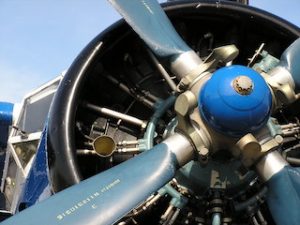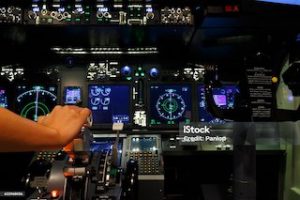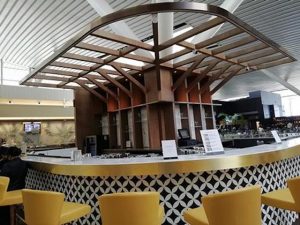Line Oriented Flight Training Course Prepares Pilots
 In the dynamic world of aviation, ensuring that airline pilots are fully prepared for the complexities of modern flight operations is crucial. One of the most effective methods for achieving this is through line oriented flight training, a specialised training approach that emphasises real-world scenarios to refine pilot skills. A critical aspect of LOFT involves pre-flight preparations and post-flight debriefings. This article delves into the significance of these components, their impact on pilot performance, and how they contribute to overall flight safety.
In the dynamic world of aviation, ensuring that airline pilots are fully prepared for the complexities of modern flight operations is crucial. One of the most effective methods for achieving this is through line oriented flight training, a specialised training approach that emphasises real-world scenarios to refine pilot skills. A critical aspect of LOFT involves pre-flight preparations and post-flight debriefings. This article delves into the significance of these components, their impact on pilot performance, and how they contribute to overall flight safety.
Line oriented flight training course
Line Oriented Flight Training is a method of training designed to simulate real-world flight operations and decision-making processes. Unlike traditional training, which often focuses on specific manoeuvres or technical skills, line oriented flight training course aims to immerse pilots in a comprehensive operational environment. This includes handling normal and abnormal situations, interacting with crew members, and making critical decisions under pressure. The goal is to enhance the pilot’s ability to perform effectively in actual flight conditions, promoting better safety and operational efficiency.
Pre-flight preparations
Pre-flight preparations are a fundamental part of LOFT and involve several key activities that ensure pilots are ready for their simulated flight scenarios. These preparations include:
1) Pre-flight briefing: Before embarking on a flight simulation, pilots participate in a detailed pre-flight briefing. This briefing covers:
-
-
- Flight objectives: The specific goals and scenarios of the training session.
- Operational procedures: Detailed instructions on the expected flight operations and any deviations from standard procedures.
- Roles and responsibilities: Clarification of each pilot’s role during the simulation, including those of the captain, first officer, and any additional crew members.
- Scenario overview: A description of the flight scenario, including potential challenges and emergency situations that may arise.
-
2) Aircraft familiarisation: Pilots must familiarise themselves with the aircraft they will be simulating. This involves:
-
-
- Cockpit layout: Reviewing the aircraft’s cockpit layout and control interfaces.
- Systems review: Understanding the specific systems and configurations that will be used during the simulation.
- Emergency equipment: Knowing the location and use of emergency equipment onboard.
-
3) Flight planning: Effective flight planning is critical to ensure a smooth simulation. This includes:
-
-
- Route planning: Determining the flight route, including waypoints, altitudes, and airways.
- Weather briefing: Analysing current weather conditions and forecasts to anticipate any impact on the flight.
- Performance calculations: Calculating takeoff and landing performance data based on aircraft weight, weather conditions, and runway length.
-
4) Crew coordination: Pre-flight preparations also involve ensuring effective communication and coordination among crew members. This includes:
-
-
- Role assignments: Confirming each crew member’s responsibilities and communication protocols.
- Briefing on communication: Establishing standard operating procedures for communication, including callouts and handovers.
-
Post-flight debriefings
Post-flight debriefings are a crucial component of LOFT, providing pilots with an opportunity to review their performance and learn from the simulation. Key aspects of post-flight debriefings include:
1) Performance review: During the debriefing, instructors and pilots review the simulation to assess:
-
-
- Decision-making: How well pilots handled decision-making processes, particularly in challenging or emergency situations.
- Procedural adherence: Compliance with standard operating procedures and regulations.
- Crew interaction: Effectiveness of communication and coordination among crew members.
-
2) Feedback and discussion: The debriefing session involves a detailed discussion where:
-
-
- Instructor feedback: Instructors provide constructive feedback on performance, highlighting strengths and areas for improvement.
- Pilot reflection: Pilots reflect on their actions and decisions, discussing what went well and what could be improved.
- Scenario analysis: Reviewing the scenarios encountered during the simulation, including alternative strategies and solutions.
-
3) Learning points: The debriefing identifies key learning points that pilots can apply to future flights, such as:
-
-
- Improved procedures: Adjustments to procedures based on simulation outcomes.
- Enhanced techniques: Techniques for better handling of similar situations in real-world flights.
- Safety enhancements: Measures to improve safety and reduce the likelihood of incidents.
-
4) Action plan: Following the debriefing, an action plan may be developed to address identified issues and enhance pilot performance. This may include:
-
-
- Additional training: Recommendations for further training or practice in specific areas.
- Skill development: Focused development of skills identified as needing improvement.
- Follow-up sessions: Scheduling additional LOFT sessions to reinforce learning and track progress.
-
Impact of pre-flight and post-flight processes on pilot performance
Effective pre-flight preparations and post-flight debriefings have a profound impact on pilot performance and safety. By thoroughly preparing for simulations and reflecting on their experiences, pilots can:
- Enhance decision-making skills: Better prepare for complex and high-pressure situations by practicing decision-making and problem-solving.
- Improve procedural knowledge: Gain a deeper understanding of operational procedures and aircraft systems.
- Foster teamwork: Strengthen communication and coordination among crew members, leading to more effective team performance.
- Boost confidence: Build confidence in handling various flight scenarios, contributing to overall flight safety and efficiency.
Integral parts of LOFT
Pre-flight preparations and post-flight debriefings are integral components of line oriented flight training, playing a vital role in enhancing airline pilot performance. By focusing on realistic flight scenarios and comprehensive reviews, LOFT ensures that pilots are well-prepared to handle the complexities of modern aviation. As the aviation industry continues to evolve, these training practices remain essential in promoting safety, efficiency, and excellence in flight operations.
Let’s touch base










